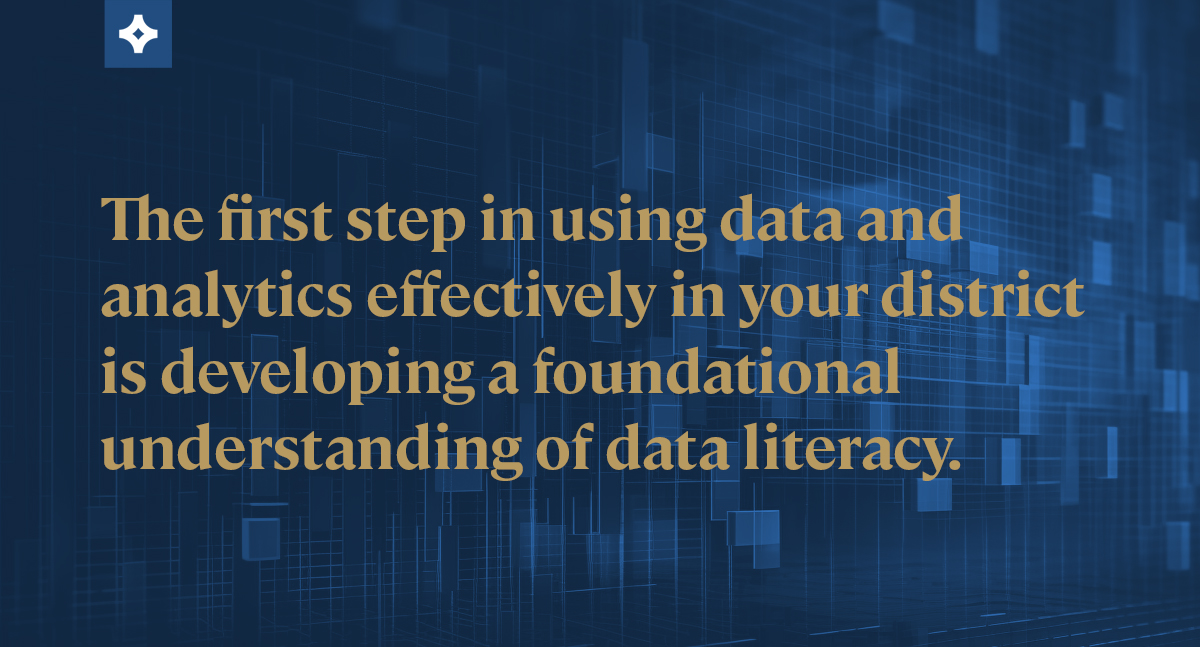School districts are collecting more data than ever before, from student performance to behavior, attendance, and more. Despite this abundance of data, many district leaders struggle to use it effectively to improve student outcomes, and to make an impact on overall school district improvement. This results in a phenomenon known as being data rich, information poor.
To address this challenge, it is critical that school district leaders understand how to collect, analyze, and interpret their data, and this will guide them to more informed decisions that improve what truly matters, student outcomes. The benefits of using data and analytics in education are significant, but they require a basic understanding of data and analytics, as well as a nuanced understanding of the district’s unique context, culture, and goals. Here at ECRA Group, we have the data and analytics understanding while you already possess knowledge of your unique local setting.

The Importance of Data Literacy
The first step in using data and analytics effectively in your district is developing a foundational understanding of data literacy. As more data is collected in schools, district leaders must be able to navigate and interpret data to use it effectively. This requires an understanding of data and analytics, including statistical concepts, data visualization techniques, and predictive analytics.
Effective use of K12 data and analytics requires district leaders to have a solid grasp of the different types of data that are available, as well as how to collect, store, and analyze that data.
Building a Data-Informed Culture
In addition to data literacy, it is critical that school district leaders create a data-informed culture. This means that the use of K12 data and analytics is embedded in all aspects of the district’s work and that data is used to inform decision-making at the school district. Creating a data-informed culture requires buy-in from all stakeholders, including teachers, administrators, board members, and parents. District leaders must be able to communicate the importance of data and analytics in improving student outcomes and ensure that stakeholders are invested in the process.
An informed culture starts with embedding data and analytics from the individual student up to the district office so that critical information is analyzed consistently and clearly. The critical imperative is for district and building leaders to put data into context, which requires a deep understanding of the sources of data and the interrelationships between data sets. Once put into context, data can be used to enrich the story of the district and improve student outcomes.
Using Data and Analytics to Improve Student Outcomes
One of the main benefits of using data and analytics at a school district is the ability to identify and address the unique needs of each student. Understanding the critical data sources and applying them to sophisticated analytics helps leaders to support student learning at the classroom and student levels. By analyzing student performance data, district leaders can identify areas where students may be struggling and tailor instruction to meet their individual needs.
Predictive analytics can also be used to identify at-risk students before they fall behind. By analyzing data on attendance, behavior, and performance, district leaders can intervene early to ensure that students get the support they need to succeed. ECRA’s School Improvement solution is built to help districts measure success and identify areas for improvement.
Finally, data and analytics can be used to evaluate the effectiveness of programs and initiatives. By analyzing data on program outcomes, district leaders can make informed decisions about where to invest resources and how to improve outcomes. Districts may also choose to measure Academic Return on Investment (ROI) to understand which programs are truly amplifying student growth.
Conclusion
There is no doubt that school districts have access to an abundance of data. Being data rich, but information poor is a common challenge faced by many school district administrators. The key to using data effectively is developing a foundational understanding of data and analytics, as well as creating a data-informed culture that embeds the use of data in all aspects of the district’s work. ECRA provides district leaders with many opportunities to learn more by visiting one of our sessions at the numerous local and national conferences we present at. We also provide on-going professional development and learning opportunities for both clients and someone simply looking to just learn more about K12 data and analytics. Sign up for a session today!
At ECRA, we believe that by using data and analytics to identify and address the unique needs of each student, school, program, intervention, etc., district leaders can make informed decisions that improve student outcomes. This fundamental belief is what drives our mission statement. We help school districts bring decisions into focus.







